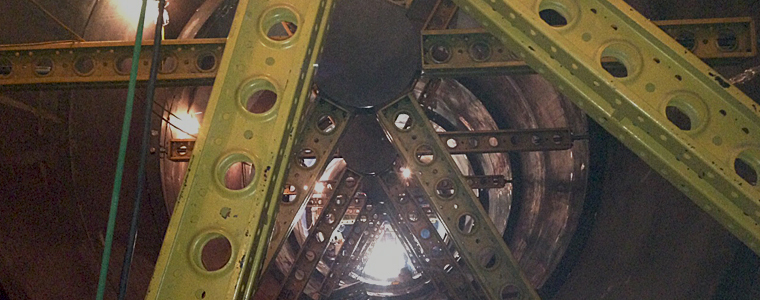Note: This post is part of a larger series on generic coating types. Click the button at the bottom of this post to download the entire guide. Continue reading “Polysiloxanes”
Category: Industrial Coating Application
Epoxies
Note: This post is part of a larger series on generic coating types. Click the button at the bottom of this post to download the entire guide. Continue reading “Epoxies”
Polyurethanes
Note: This post is part of a larger series on generic coating types. Click the button at the bottom of this post to download the entire guide. Continue reading “Polyurethanes”
Water-based acrylics
Note: This post is part of a larger series on generic coating types. Click the button at the bottom of this post to download the entire guide. Continue reading “Water-based acrylics”
Trends in plural component coating systems
Strictly speaking, plural component coatings are nothing new. They’ve been in use in the industrial painting industry since the 1970s. Continue reading “Trends in plural component coating systems”
The challenges of industrial painting in confined spaces
An industrial painter’s work sometimes takes him or her into some tight spaces. Beyond the understandable feelings of claustrophobia that come with confined space work, there are some serious hazards to crews that must be understood, and trained for, before confined space work is undertaken. Some of the jobs that most commonly involve painting in tight spaces are storage tanks, pipelines, penstocks, water towers and railroad tank cars.

Confined spaces vary in type and dimension, but are described by SSPC as “large enough and so configured that an employee can enter and perform assigned work; having limited or restricted means for entry; and not designed for continuous occupancy.”
Because of the challenges described below, any painter enlisted to work in confined spaces should have the proper credentials. To receive a QP 1 certification for the painting of complex structures, contractors must have in place and be able to execute a plan for working in confined spaces.
Confined space hazards
The materials that have previously been stored in a confined space, a storage tank for example, can leave behind vapors that are dangerous in large enough concentrations. These vapors often collect in the bottom of tanks and, in the absence of detection equipment, emit no obvious signs of their presence.
To guard against exposure to these vapors, crews should measure the air quality with a multi-gas monitor before entering a confined space. This monitor should be capable of reading oxygen levels and detecting flammable or otherwise toxic substances. Measurements should be taken each time before entering, and should be continuously monitored in most cases.
Confined space work also necessitates the presence of a confined space attendant, an individual that remains near the opening of the confined space. It is this individual’s job to monitor entry and exit from the confined space, and in case of an incident, to set in motion predetermined procedures for evacuation or other rescue. This may include operating retrieval equipment, such as a winch, if a worker is unable to remove himself from the space under his own power.
Even when there are no preexisting chemicals present in the confined space, the products industrial painters use can be the source of dangerous byproduct. Solvent-based paints are often flammable or emit vapors that are hazardous when densely concentrated. High or 100 percent solids products should be used when possible, and detailed procedures for reducing fire hazards should always be followed. Water based, low VOC products make very good substitutes. This substituting out of a more dangerous product for a less dangerous one is an important part of the hierarchy of controls in the safety pyramid.
Evaporating solvents produce vapors that make ventilation in confined spaces a major concern. Crews spending long periods of time in confined spaces should wear the proper protective equipment. Air-supplied respirator hoods should be worn in addition to having a well-designed ventilation system in place. This ventilation system should ensure a fresh supply of air is continuously circulating throughout the space. The proper number of air exchanges per hour will depend on the volume of the space and the coatings system being used.
The most thorough way to eliminate the hazards associated with working in confined spaces is to design the work in such a way that crews never need to enter the confined space. This may seem obvious, but it’s important. Eliminating risks forms the foundation of the safety pyramid. Engineering controls, procedural controls and personal protective equipment play an important role in protecting crews in confined spaces, but the goal should always be to eliminate the risk when possible.

